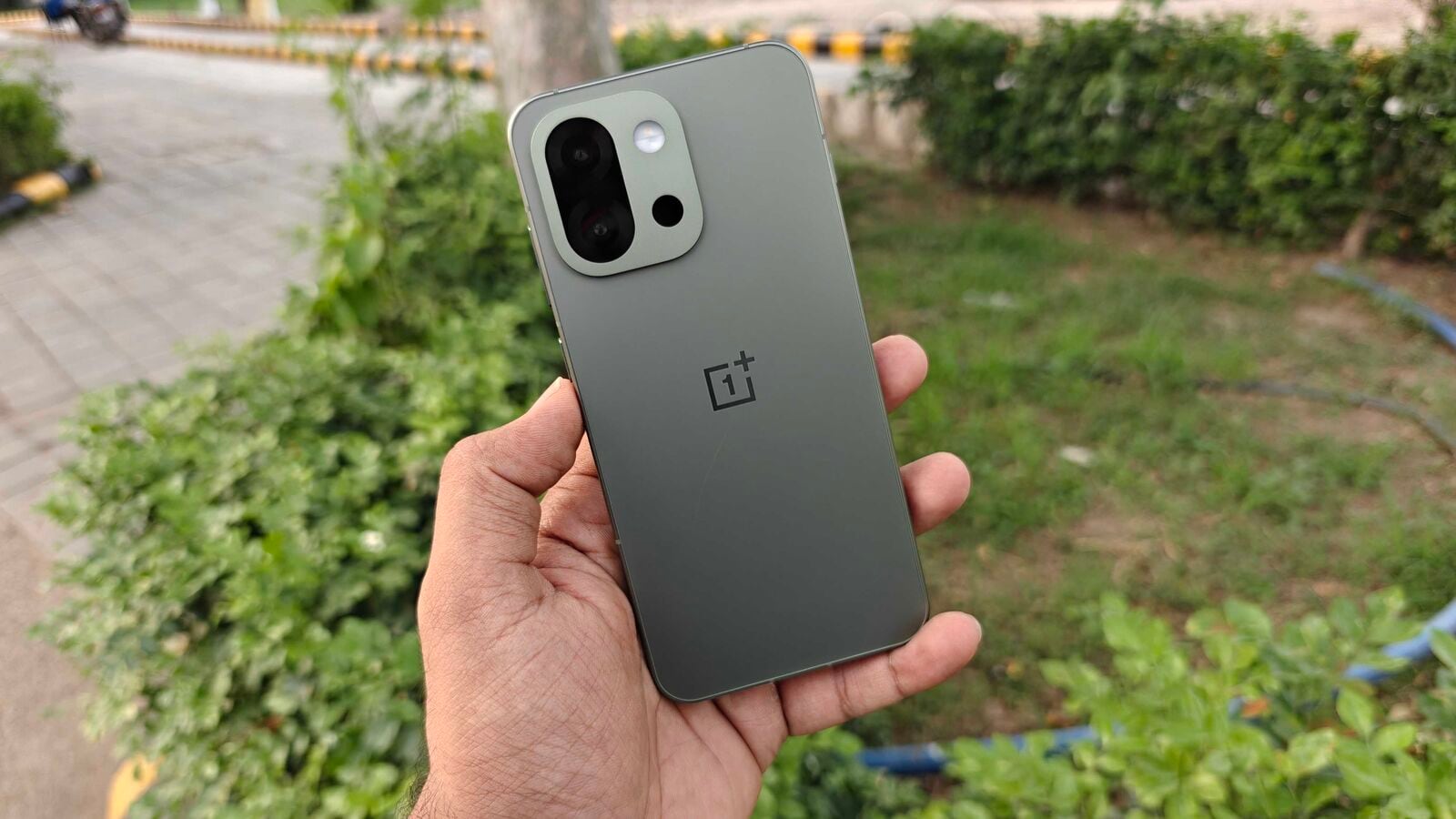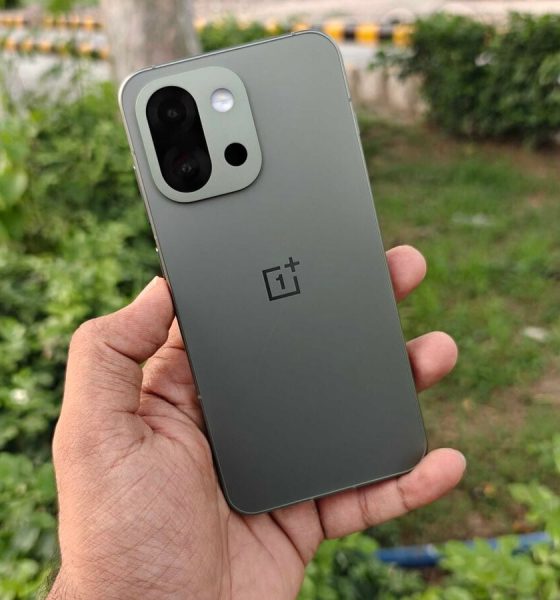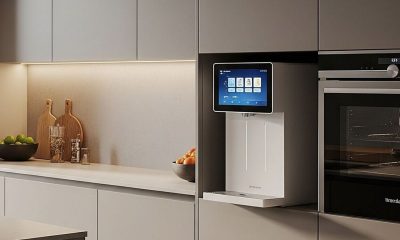

Technology
OnePlus 13s review: A near-perfect compact phone, minus a few flagship perks – Crypto News
After hitting a home run with the OnePlus 13 and OnePlus 13R earlier this year, OnePlus has now expanded its flagship lineup with a compact addition—the OnePlus 13s. This is almost the same phone that launched as the OnePlus 13T in China wit a couple of changes. As for the new India specific ‘s’ branding, OnePlus says it stands for a Stronger, Smarter and Smaller form factor.
I have been using the OnePlus 13s as my primary device for nearly a month now, and here is my take on how it performs in the real world.
Unboxing and Design:
There are a lot of things you can fault OnePlus for but one thing that you have to admit about the company is that they continue to provide one of the most wholesome Unboxing experiences in the market and the OnePlus 13s is no different.
The 13s comes in the same red coloured box as its siblings and the setup inside is also similar to them. After opening the box, one is greeted with a device first wrapped inside a paper sheet, followed by some paperwork, SIM ejector tool, an 80W white coloured adapter, a traditional red coloured OnePlus cable and a colour matched case.
The in-hand feel of the OnePlus 13s is very premium thanks to the full metal finish, curved edges and obviously the smaller form factor. While the phone comes with a 6.32 inch display, OnePlus says they have also worked on narrowing down the bezels to make sure the ultimate size comparable to a 6.1 inch device from other brands.
The smaller form factor means that despite the 13s boasting almost the same thickness as the OnePlus 13, it’s much easier to hold and at 186grams it’s way too light on the pocket. However, I would still like to see OnePlus reduce the size a little bit in order to make way for better one-handed usage.
Camera:
OnePlus 13s features a dual camera setup with a 50MP Sony LYT-700 primar sensor with OIS and a 50MP 2x telephoto lens. The front shooter is a 32MPP Galaxycore GC32E sensor with autofocus. While the rear camera can shoot at a maximum of 4k 60fps, the front shooter is limited to 4k at 30fps.
The primary shooter is exactly the same from the OnePlus 13R just like that device there isn’t much to complaint about for the price point with the phone taking pictures with plenty of details, true to life colour tones and reliable HDR performance.
The telephoto shooter also does the job well in most daylight scenarios with even images up to 6x being usable but anything beyond that kind of loses its sheen. In low light, the telephoto sensor can capture good pictures but they can turn out to be shaky if one is not very careful, owing to a lack of OIS.
The 32MP autofocus sensor, however, is very good addition to this setup and the results were pretty impressive in my testing with the output from this sensor even rivalling that of the OnePlus 13. The selfie shooter captures sharp images that retain facial detail and maintain contrast well without making the final image look overly processed.
Software:
OnePlus 13s runs on OxygenOS 15 based on Android 15 and the company has promised 4 years of OS updates and 6 years of security patches. While ,in my opinion, OxygenOS is already the best user experience that one can get on Android with some essential and other unnecessary AI features, OnePlus has actually went on to improve this further with a new suite of features on OnePlus 13s.
For one, the dialler app has been completely revamped to make it in tune with the rest of the UI while also adding an AI call assistant that can seamless translate calls between different languages and even summarize the conversations. Another point worth noting is that since its a system dialler, there is no alerts while recording phone calls.
An AI VoiceScribe feature is also present during WhatsApp calls now that allows users to start recording (with a sound alert), get AI summary of a conversation or even turn on captions.
There are also a number of new AI features that OnePlus is bringing with the 13s which includes AI translation, AI Search (for natural language search), AI Reframe and AI Best Frame.
Battery:
OnePlus has made only one change from the OnePlus 13T to the 13s by reducing the battery size from 6,200mAh to 5,850mAh and replacing the front 16MP shooter with a 32MP shooter (more on this later). While some people may grudge the company for this change, I am actually perfectly fine with this arrangement given that this battery is powering only a 6.32 inch display and OnePlus has also improved the battery optimization a lot compared to the OnePlus 13.
Despite using the phone as my regular driver with 5G turned on, I could easily stretch for it for over a day and into to the 1.5 dayish category. Do keep in mind, though, that this figure could be different for other users and my use case included no to very low gaming, mostly browsing the web, running social media apps, watching occasional YouTube videos and listening to songs.
With good part out of the way, I am actually extremely disappointed with the new strategy that OnePlus is employing of increasing the battery size while keeping the charging speeds low (by their standards). The 13s only supports 80W of fast charging and no support for wireless charging – which is a definite disparity compared to the OnePlus’ actual ‘flagship’ of the year.
Thoughts on Plus Key:
The OnePlus 13s is the first phone from the company to drop its iconic alert slider in favour of a new iPhone style Plus Key. But instead of offering a like for like swap with just ring profile controls, OnePlus has built in additional functionalities such as launching the voice recorder, taking a screenshot or photo, and most notably, activating AI Plus Mind.
Unfortunately, the Plus Key is not customisable yet. You can only assign one task at a time. So if you have set it to change ring profiles, you will not be able to access Plus Mind without reassigning the key.
As for Plus Mind, it is a good first step from OnePlus toward building an artificial memory system of sorts. But its current functionality is limited, and its true potential will likely only emerge with future updates.
Right now, you can only store items in AI Plus Mind by tapping the designated Plus Key. There is no option to share content directly into it, like a web article you want to revisit later. At this stage, the feature feels more like an extension of the screenshot tool, with the AI offering a brief description of what you have captured. However, there is no way to interact with the underlying model.
For instance, when I pointed the camera at my bedsheet and used the Plus Key to capture it, the AI correctly identified the colour and even recognised the design as a Mandala print. But that is where the interaction ends. You cannot ask follow up questions or explore more about Mandala prints.
Performance:
The OnePlus 13s runs on the same Snapdragon 8 Elite chipset as its elder sibling and indeed most other flagship phones launched this year. Just like its elder sibling, the 13s also comes with support for LPDDR5x RAM and UFS 4.0 storage.
As one would expect, the top of the line specifications also translate into real-world performance and the OnePlus 13s faces no issues while handling day to day tasks, multi-tasking (thanks to OnePlus’ Open Canvas) and switching between multiple apps.
I did face a lot of heating issues with the phone during the initial period but since then the problem has been more or less tapered down with a software update. That being said, the 13s does have a tendency to stay on the warmer side while running the benchmarks or during prolonged gaming sessions, not so much in day to day usage.
And finally for the benchmarks:
Antutu: OnePlus 13s garnered a score of 24,01,817 which is higher than the score I received for the OnePlus 13 but lower than the results of iQOO 13
GeekBench 6 CPU: Single core score of 2,722 and a multi-core score of 7,266
3D Mark’s Extreme Wild Life Stress Test: Best loop score of 6,086 and a lowest loop score of 4,825 with stability at an impressive 79.3%
Should you buy the OnePlus 13s?
At an effective starting price of ₹49,999, the OnePlus 13s isn’t the most perfect phone out there. It misses out on an ultra-wide-angle lens, IP68 rating, Hasselblad tuning, and OIS for the telephoto camera. It also faces stiff competition from other OnePlus offerings like the 13R and even last year’s OnePlus 12.
But where OnePlus has truly succeeded is in delivering a compact flagship that doesn’t feel like a compromise. If you’re looking for a smaller phone that’s genuinely usable with one hand, the OnePlus 13s stands out thanks to its top-tier processor, vibrant LTPO AMOLED display, feature-rich software experience, and solid battery life. The cherry on top is that OnePlus has nailed the ergonomics here with the 13s offering a lightweight form factor and perhaps the most premium in-hand feel you’ll get on any phone right now.
-

 Cryptocurrency4 days ago
Cryptocurrency4 days agoShiba Inu burn surges 2,408%: Can SHIB finally escape bearish pressure? – Crypto News
-

 Blockchain1 week ago
Blockchain1 week agoTesting Strength At Key Support – Crypto News
-

 Technology1 week ago
Technology1 week agoCool savings for a hot season: Top 10 deals for you on ACs, refrigerators, microwaves, and more with up to 60% off – Crypto News
-

 Blockchain1 week ago
Blockchain1 week agoCzech Justice Minister Resigns Over $45M Bitcoin Donation Scandal – Crypto News
-

 Cryptocurrency1 week ago
Cryptocurrency1 week agoOne day left to invest in Bitcoin Pepe before it hits centralised exchanges – Crypto News
-

 Technology1 week ago
Technology1 week agoWhatsApp Status gets new Instagram-like features: Here’s what’s new – Crypto News
-

 others6 days ago
others6 days ago‘Nothing Stops This Train’ – Macro Guru Lyn Alden Warns Fed Has No Way To Slow Down Debt Growth in US Financial System – Crypto News
-

 Cryptocurrency1 week ago
Cryptocurrency1 week agoCold Summer? Bitcoin Price Breaches $105K Support As Tariffs Return to Play – Crypto News
-
others1 week ago
Sharplink Gaming Files $1 Billion Shelf Offering To Purchase Ethereum – Crypto News
-
Cryptocurrency1 week ago
Can Shiba Inu Price Recover as Age Consumed & Falling MVRV Signal Bottom? – Crypto News
-
Cryptocurrency6 days ago
Ethereum’s Pectra Upgrade leaves massive loophole for scammers – Crypto News
-

 Cryptocurrency1 week ago
Cryptocurrency1 week agoLitecoin price forecast: tracking LTC’s bullish technical setup – Crypto News
-

 Cryptocurrency1 week ago
Cryptocurrency1 week agoLitecoin price forecast: tracking LTC’s bullish technical setup – Crypto News
-

 Cryptocurrency1 week ago
Cryptocurrency1 week agoXRP futures surge past $223M as price holds $2.27 support – Crypto News
-
Business1 week ago
Sharplink Gaming Files $1 Billion Shelf Offering To Purchase Ethereum – Crypto News
-

 others1 week ago
others1 week agoBankrupt Crypto Exchange FTX Officially Kicks Off Second Round of Creditor Repayments With $5,400,000,000 Distribution – Crypto News
-

 Cryptocurrency1 week ago
Cryptocurrency1 week agoBitcoin in ‘make or break’ zone – Trump Media hints at what’s next – Crypto News
-

 Blockchain1 week ago
Blockchain1 week agoBitcoin Still Bullish, But $200,000 Off The Table And $137,000 In Sight – Crypto News
-
Technology1 week ago
Just-In: IMF Raises Red Flag Over Pakistan’s Bitcoin Mining Plans, Is $1.5B IMF Loan at Risk? – Crypto News
-

 Metaverse6 days ago
Metaverse6 days agoSamsung tapping Perplexity AI for all devices — what does this mean for you? – Crypto News
-

 Cryptocurrency6 days ago
Cryptocurrency6 days agoEthereum retests $2,500 as companies bet big on ETH – Crypto News
-

 Cryptocurrency6 days ago
Cryptocurrency6 days agoTop crypto predictions: XRP, Monero, Bitcoin Pepe – Crypto News
-

 Cryptocurrency4 days ago
Cryptocurrency4 days ago$106,313,218 Solana (SOL) In One Transfer — What Happened? – Crypto News
-
Business1 week ago
XRP Crash: Why Price Is Falling Today? – Crypto News
-

 others1 week ago
others1 week ago$413,200,000,000 in Unrealized Losses Hit US Banks As FDIC Warns Rising Rates Adding Pressure – Crypto News
-

 others1 week ago
others1 week agoJPMorgan Chase CEO Warns US Bond Crisis Coming After Massive Money Printing, Says Regulators Will Panic – Crypto News
-

 Cryptocurrency1 week ago
Cryptocurrency1 week agoPakistan to create strategic Bitcoin reserve, earmarks 2000MW for crypto mining – Crypto News
-
Business1 week ago
Michael Saylor Signals Another Massive Strategy Bitcoin Purchase – Crypto News
-

 Cryptocurrency7 days ago
Cryptocurrency7 days agoXRP Saved? Bears Not Taking Control – Crypto News
-
others7 days ago
XRP Price Prediction for June: Key Levels to Watch as Technicals Flash 2017 Bull Signs – Crypto News
-
others6 days ago
Bitcoin Rises As FED Chair Jerome Powell Fails To Speak On Economic Outlook – Crypto News
-
Business6 days ago
From Buffett to Zuck: Satoshi Bitcoin Wealth on Path to Surpass Tech and Finance Titans – Crypto News
-

 others5 days ago
others5 days agoWTI Crude Oil extends gains as Canada wildfires, geopolitical tensions, and a broadly weaker US Dollar support prices – Crypto News
-

 Technology4 days ago
Technology4 days agoBest water purifiers under ₹15000: Explore the top 6 options from Aquaguard, Urban Company and more – Crypto News
-

 Cryptocurrency1 week ago
Cryptocurrency1 week agoEthereum Name Service gains momentum—$100k in sight? – Crypto News
-

 Blockchain1 week ago
Blockchain1 week agoEthereum Price Faces Mild Correction — Support Levels in Focus – Crypto News
-

 Blockchain1 week ago
Blockchain1 week agoEthereum Repeating Early 2024’s Playbook – $3,800 Target Next? – Crypto News
-
Business1 week ago
Floki Inu Announces Valhalla Mainnet Launch Date; FLOKI Price to Rally? – Crypto News
-

 Metaverse1 week ago
Metaverse1 week agoIndiaAI Mission gets 16,000 new GPUs, three more foundational models – Crypto News
-
Technology1 week ago
What’s Behind the Crypto Price Drop: BTC, ETH, DOGE, XRP Down – Crypto News
-

 Cryptocurrency1 week ago
Cryptocurrency1 week agoSolana could lag Ethereum as meme coin activity dips – Crypto News
-

 Blockchain1 week ago
Blockchain1 week agoInsurers Race to Cover Crypto Kidnap and Ransom Risks – Crypto News
-

 Cryptocurrency1 week ago
Cryptocurrency1 week agoFriday Charts: Click here for good news – Crypto News
-
Technology1 week ago
James Wynn Shills Moonpig While Mulling A $1B Comeback In “Trade Of The Century” – Crypto News
-
others1 week ago
Mexico Fiscal Balance, pesos increased to 0.29B in April from previous -24.6B – Crypto News
-

 others1 week ago
others1 week agoCanadian Dollar lurches higher on upbeat quarterly GDP growth – Crypto News
-

 Blockchain1 week ago
Blockchain1 week agoMajor crypto hacks fell 40% in May, says PeckShield – Crypto News
-
Business1 week ago
XRP Las Vegas: Brad Garlinghouse Says Bitcoin Is Not The Enemy – Crypto News
-

 Blockchain1 week ago
Blockchain1 week agoStrategy signals another Bitcoin buy on June 2 – Crypto News
-

 Cryptocurrency7 days ago
Cryptocurrency7 days agoCardano Price Breaches Key Support As ETF Decision Bites – Crypto News
















